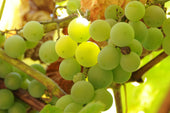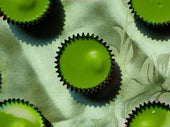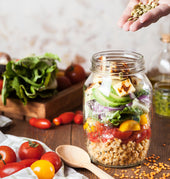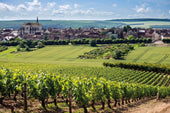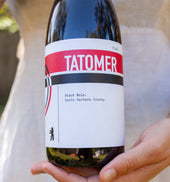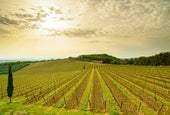
A Year in the Life of a Grape Grower

For Northern California grape growers, November is recovery time. After the flurry of harvest activity and the bright explosion of vineyard color, a brisk wind tears the leaves from the vines exposing their skeletal canes to the elements. On clear mornings, ground fog hovers in low areas over the dormant vines while underground, their roots search for nutrients in the soil.
Meanwhile, grape growers take stock. Every growing season has the potential for frost, flooding, late rains, drought, mold and disease, bird damage and extreme heat. However, the compulsion to both nurture and tame a grapevine, whose fruit value is offset by the plant’s recalcitrance for obeying anything but the laws of its own nature, is strong.
In Winter: Storms roll in from the Pacific to drop atmospheric rivers of rain and deliver gale force winds. By February, it’s hard to recall that the ground was once as dry and hard as concrete. Verdant wildflowers such as yellow mustard and camomile erupt from the sodden turf. The saffron-striped vineyards present a charming view to the visitor. In truth, they are a muddy boot-sucking quicksand. Hardy growers trek through this morass to check their drip irrigation and frost protection systems before their thoughts turn to pruning and budbreak.
Pruning transforms the bare wind-whipped vineyards into neat, orderly rows. Vines are pruned to tame enthusiastic growth by clipping old growth and positioning new shoots for maximum vine health and crop yield. An early bud break can be subject to a freeze, so growers try to time their pruning for minimum risk and maximum growth. Bud break occurs 6-8 weeks after pruning and signals the beginning of the grape growing season, and the onset of cautious optimism and anxiety in the hearts of grape growers.
In Spring: It’s April and the shoots have grown dramatically in a month’s time as the buds flower and self-pollinate. During flowering, there is a risk of the uneven development of grape clusters, a signal of failed pollination called shatter. The appearance of buckshot berries—grape clusters with tight green nodules on long stems—indicate that the risk has passed.
Spring also brings the endless cycle of mowing, hedging, leafing, suckering, spraying and irrigation. This frenetic activity aims to direct every nutrient and every bit of photosynthesis towards the star of the show—the grape cluster. Of these tasks, mowing is particularly onerous because it is repetitive and requires great attention. It is a job best suited for one with Zen sensibilities. One wrong move and a trellis or vine is damaged; not to mention pop-up traffic hazards such as small rabbits and very large gopher snakes.
In Summer: The vineyard appearance has changed dramatically. Broad leafy green lines run in crazy quilt patterns up and down the dun brown summer hillsides. The reckless top growth stretches between the vineyard rows, and the grape clusters have become tightly-packed hard green grenades.
By July, the vines are up in trellis wires. This allows hanging clusters the optimal exposure to sunlight, shade, and air movement that will lead to increased sugar content and veraison: the color change that indicates grape maturity. Grape growers now have a good sense of their fruit set and it’s time to consult with their winemakers about potential harvest dates.
With veraison, another vineyard threat arrives in the form of greedy starling flocks. Sturnus vulgaris: the name says it all. They descend en masse on vineyards to ravage ripened clusters. Growers have many defenses against bird damage, from placing nets over the fruit, to hoisting kites that impersonate raptor predators. Intrepid farmers with tolerant neighbors transmit loud screeching raptor calls at odd intervals. The enmity is understandable: these birds are eating the profits.
Late Summer to Fall: After the grower and winemaker have tested the grapes for sugar content (brix) they set an ideal harvest date. The real harvest day will depend on the availability of busy harvest crews. The pick actually begins in the wee hours of the morning with all hands on deck. Headlamp-clad workers scurry down the rows dropping clusters into their bin before kicking it to the next vine. The chug of a tractor drowns out the snicking of clippers and the occasional shouts among the crew. Grower and winemaker are both at hand to perform any necessary tasks, from pulling leaves out of grape bins, to driving the tractor or forklift.
Dawn finally breaks upon a line-up of bins bursting with aromatic grape clusters, hoisted neatly onto a flatbed and made secure. Hours later, after the grapes are weighed and tagged, the grape grower will discover the dollar value of the fruits of their labor. And, that night, they will experience the first restful sleep since January.
Patty Lyn Tweten is a writer, graphic designer and vineyard owner. She is also a devoted fan of rosés having helped her husband make their own with the sagniée method. Instagram Linkedin







